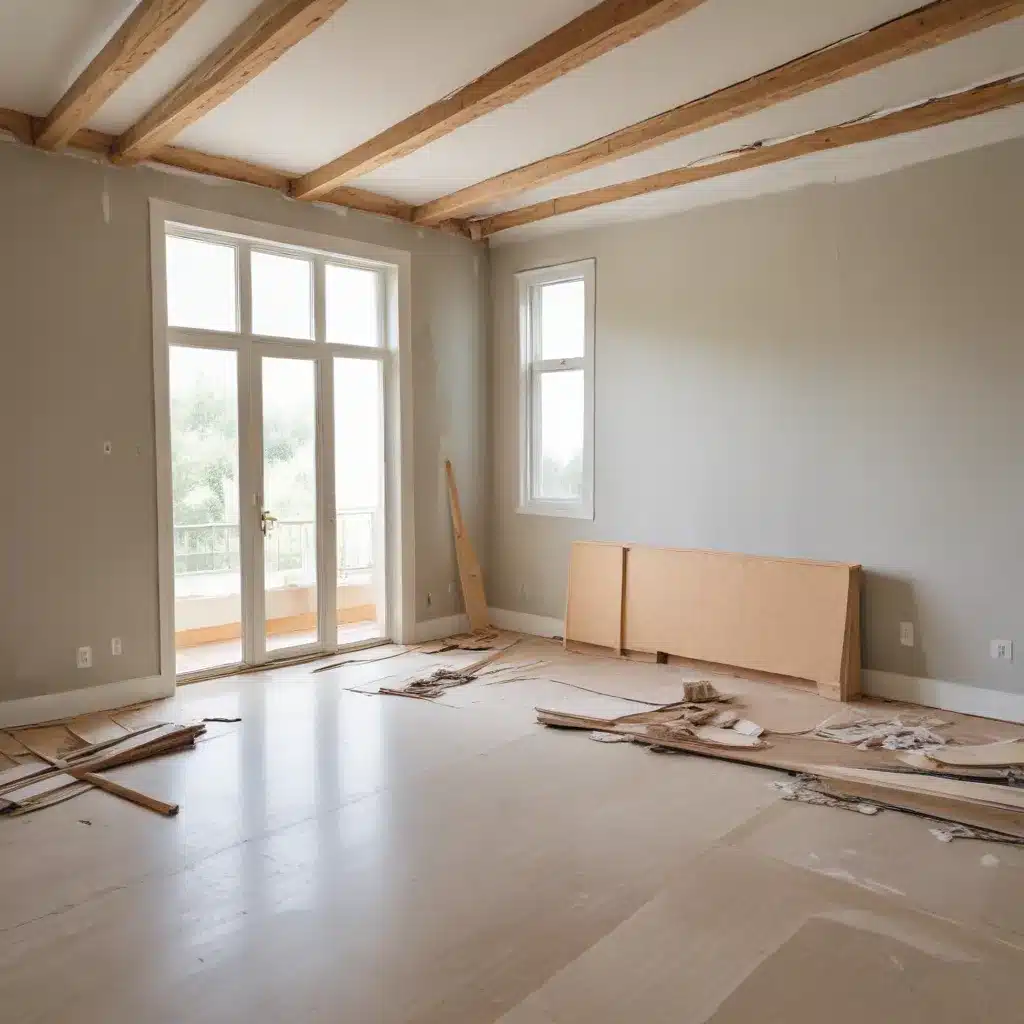
As an experienced home improvement consultant writing for Reluctant Renovator, I’m excited to share strategies for transforming your living space into an eco-friendly haven. Whether you’re tackling a budget-friendly project, weighing DIY vs. professional help, or seeking inspirational design trends, this comprehensive guide will help you reduce your carbon footprint through sustainable remodeling.
Sustainable Home Transformation
Principles of Eco-Friendly Remodeling
At the heart of eco-friendly remodeling lies a deep consideration for the environmental impact of your project. By thoughtfully assessing your energy consumption, resource usage, and waste generation, you can make informed decisions to minimize your home’s carbon footprint.
Energy efficiency is a crucial starting point. Maximizing your home’s energy performance not only reduces greenhouse gas emissions but also translates to long-term savings on utility bills. Strategies like upgrading insulation, replacing windows, and investing in energy-efficient appliances can significantly improve your home’s overall energy performance.
Renewable Materials and Resources
Incorporating recycled and repurposed materials into your remodel is an excellent way to reduce waste and conserve natural resources. From reclaimed wood flooring to recycled-content countertops, there are a wealth of sustainable options that can lend character and charm to your space.
When sourcing materials, prioritize eco-friendly suppliers that use responsibly harvested, renewable, or recycled resources. This not only supports environmentally conscious businesses but also ensures the longevity and durability of your remodel.
Smart Design Strategies
Thoughtful space planning and passive solar design can go a long way in creating an eco-friendly home. By optimizing the layout and orientation of your living spaces, you can harness natural light and ventilation, reducing the need for artificial lighting and climate control.
Consider incorporating multi-functional furniture and built-in storage solutions to maximize the efficiency of your square footage. This not only minimizes your physical footprint but also requires fewer resources during the construction phase.
Minimizing Resource Consumption
Water Conservation Techniques
Water conservation is a crucial aspect of sustainable remodeling. By incorporating efficient plumbing fixtures, such as low-flow toilets and showerheads, you can significantly reduce your household’s water usage.
For an even greener approach, explore greywater recycling systems that divert used water from sinks, showers, and washing machines for landscape irrigation or toilet flushing.
Waste Reduction Measures
Keen construction waste management practices can make a substantial impact on your remodel’s environmental footprint. Work with your contractor to develop a comprehensive plan for recycling, repurposing, or responsibly disposing of any waste generated during the renovation process.
Extend your sustainability efforts to your day-to-day living by incorporating composting and recycling into your household habits. This helps minimize the amount of waste that ends up in landfills, reducing methane emissions and conserving valuable resources.
Renewable Energy Integration
Harnessing the power of the sun through solar panel installation is an excellent way to reduce your reliance on fossil fuels and generate clean, renewable energy for your home. By feeding excess energy back into the grid, you can even earn credits and see a return on your investment over time.
For a more holistic approach, consider incorporating geothermal heating and cooling systems that tap into the earth’s natural temperature regulation to provide efficient, eco-friendly climate control.
Enhancing Indoor Air Quality
Healthy Building Materials
Prioritizing low-VOC paints, formaldehyde-free cabinetry, and other non-toxic materials can significantly improve the indoor air quality of your home. These products not only minimize the release of harmful chemicals but also contribute to a healthier living environment for you and your family.
Ventilation and Airflow
Proper ventilation is essential for maintaining good indoor air quality. Natural ventilation strategies, such as strategically placed windows and doors, can promote airflow and help regulate temperature without relying on energy-intensive HVAC systems.
For a more comprehensive approach, consider installing mechanical ventilation systems that provide controlled air exchange, filtering out pollutants and maintaining optimal humidity levels.
Improving Thermal Comfort
Upgrading your home’s insulation and creating an airtight building envelope can enhance thermal comfort while reducing your energy demands. By preventing unwanted air leaks and improving your home’s thermal performance, you can minimize the strain on your heating and cooling systems, leading to greater energy efficiency and cost savings.
Sustainable Landscaping Practices
Native and Drought-Tolerant Plants
Incorporating native and drought-tolerant plants into your landscaping can greatly reduce the need for water-intensive irrigation. These resilient species are well-adapted to your local climate, requiring less maintenance and water to thrive.
For an added bonus, consider incorporating edible gardening elements, such as vegetable beds or fruit trees, to not only beautify your outdoor space but also provide a sustainable source of fresh produce.
Water-Efficient Irrigation
Embrace rainwater harvesting systems that capture and store precipitation for landscape irrigation, minimizing the strain on municipal water supplies. Pair these with drip irrigation methods that deliver water directly to the roots, reducing evaporation and waste.
Reducing Landscape Maintenance
Low-maintenance permeable hardscaping solutions, such as porous pavers or gravel pathways, can help reduce the need for water-intensive lawn care while also improving stormwater management.
Complement these with an organic lawn care regimen that eschews harmful chemicals in favor of natural fertilizers and pest management techniques, promoting a thriving, eco-friendly outdoor oasis.
As an experienced home improvement consultant, I hope this comprehensive guide has inspired you to embark on an eco-friendly remodeling journey. By incorporating sustainable strategies into your home transformation, you can not only reduce your carbon footprint but also enjoy the long-term benefits of a more comfortable, energy-efficient, and environmentally conscious living space.
Remember, every small step you take towards sustainability can make a significant impact. For more resources and inspiration, be sure to visit Reluctant Renovator, where you’ll find a wealth of information to guide you through your sustainable home remodeling project.



